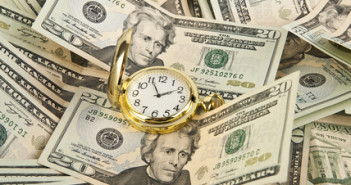Even though the economic calendar is fairly full this week, the significant data points are heavily skewed to the latter half of the week, and thus beget a slow start to the week from an economic data perspective. Despite the lack of data, equity futures in North America reside in positive territory ahead of the opening bell, while the greenback starts the week with a firmer bid tone as the DXY stabilizes to the north side of 97. The two main developments that are driving market price action as we head into the North American session are acting in sea-saw fashion, with rumors the People’s Bank of China is considering launching its own Quantitative Easing program driving positive risk appetite, while the hangover effects of a disappointing Eurogroup meeting in Riga spur Greek contagion worries and thus have European equities lagging the strong performance in China.
While there hasn’t been any official decision on the Chinese government adopting their own form of Quantitative Easing, reports overnight have stated that the PBoC is actively discussing policies that would expand their balance sheet to boost the supply of liquidity and aid in the stabilization of growth. From a policy perspective this would tie in with the goal of having local governments directly issue bonds this year to mitigate systemic risk and boost local economies, as the PBoC would be able to buy other assets off bank’s balance sheets in order to free up capital and generate demand for the new local government issues. Given the challenges the government will have this year achieving a 7.0% growth rate in GDP it seems likely at some point they will have to move past reserve ratio requirement cuts, and on to direct expansion of the PBoC’s balance sheet. Despite there being no word on an official decision, the Shanghai Comp finished the day up 3.06%, while the Chinese yuan tumbled to the 6.2 handle against the USD as the QE rumors led to a bout of short-covering in the popular short USDCNY trade. The Canadian dollar has been one of the main benefactors of the increase in risk appetite, as policies conducive to boosting Chinese demand for raw materials is a net positive for resource-based economies. Even with a modest offer tone in the hydrocarbon complex that has front month WTI flirting with ceding into the $56/barrel area, the loonie is stronger against the greenback and has USDCAD sliding into the mid-1.21s.
Not quite as fortunate as the loonie, the euro has been losing strength against the greenback this morning, which is continuing to feel the ill-effects ofFriday’s underwhelming Eurogroup finance minister meeting in Riga, where tensions were reportedly heating up as the Greek negotiations push ever closer to the brink. Not only does Greece have a €200mln payment that is due to the IMF on May 1st, but on May 6th the ECB will discuss whether to boost the haircut on Greek collateral being used to access the Emergency Liquidity Assistance window, owing to the erosion in price and increase in potential restructuring if the negotiations continue to go sideways. Any increase in haircut towards Greek collateral brings forward the day Greece runs out of cash, and thus squeezes their negotiating position as solvency becomes more of an issue than access to liquidity. The euro has eased its way into the low 1.08s against the big dollar as we go to print, and with a lack of economic data to digest, we expect headline activity surrounding the Greek situation to keep driving price action of the common-currency.
Further reading:
Is CAD Oversold; How To Play It Now? – Credit Agricole
Is CAD Oversold; How To Play It Now? – Credit Agricole



